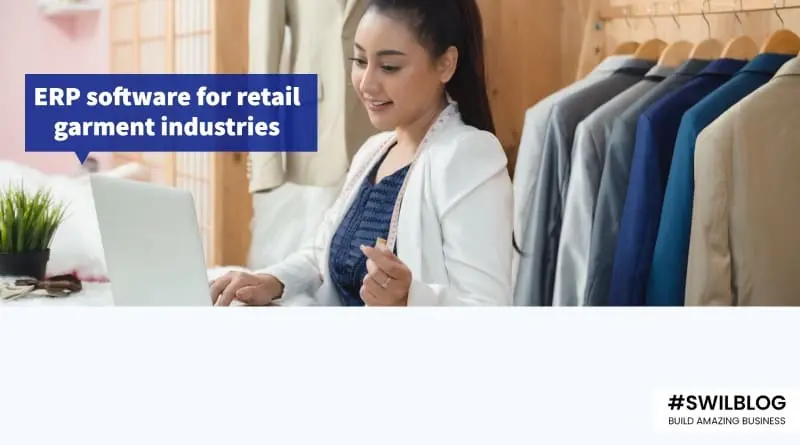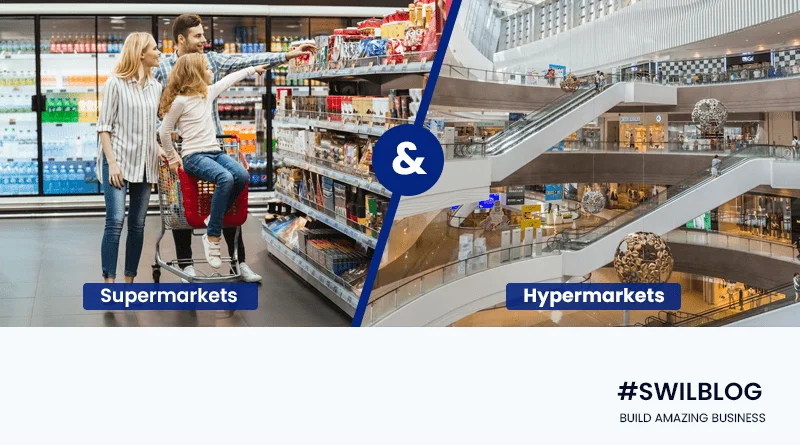Introduction
Utilizing integrated applications has become necessary for business efficiency. The need for precise and cutting-edge data has become essential as businesses expand worldwide. The material business is a sector with complex item combinations and extensive handling groups, requiring an effective IT infrastructure.
The majority of the apparel and garment industry involves planning and placing together clothes, allocating and using materials that are currently used to make fabrics,
- Managing,
- Weaving,
- Turning,
- Stitching, and
- Retailing, and
- Optimizing these cycles using enterprise resource planning (ERP) programming.
This makes it extremely helpful to run your entire business from top to bottom.
Article Content-
- Why does the Garment Sector require an ERP system?
- Advantages of Implementing an ERP System in a Garment Business
- The advantages of implementing a new ERP system in the garment industry are as follows
- How SWIL’s Garment ERP helps your business
- Conclusion
Why does the Garment Sector require an ERP system?
The apparel sector uses ERP to handle production, shipment, and distribution; cash flow; sales forecasting; apparel design; inventory control; and other fundamental business functions.
ERP software offers a more effective method for boosting profitability in various garment and apparel businesses. To reduce textile waste and scrap fabric during manufacturing, garment manufacturers should better plan their textile needs with the help of ERP’s manufacturing tools.
Advantages of Implementing an ERP System in a Garment Business
The textile and garment industries are constantly under pressure due to
- Fluctuating economic conditions,
- Technical advancements, and
- Volatile fashion trends.
Implementing AI and business analytics functions makes it possible to handle the issues facing the sector with an ERP like Dynamics 365.
With Microsoft Dynamics 365 ERP and CRM, you can access a single platform for managing your finances, streamlining your supply chain, managing your production and planning processes, and providing a seamless, omnichannel experience incorporating customer insights.
The advantages of implementing a new ERP system in the garment industry are as follows
- Enhanced real-time data accuracy
- Increasing efficiency and reducing errors by minimizing manual processes
- More efficient inventory control
- A shorter process from order to shipment
- Cost reductions resulting from more proper planning
- Enhanced accounting management via integrated finances
- Cloud-based accessibility from anywhere at any time
- Makes it easier to prepare relevant reports.
1. An effective and high-quality assembly approach
The manufacturing system in the apparel industry is extensive and lengthy, and problems could arise from a lack of legal correspondence. ERP provides a solution by enhancing coordination and monitoring the inventory network.
2. Customer satisfaction is more prevalent
When a specific problem does arise, an ERP also helps track the progress made in the production lines and tends to identify it quickly. With the statistics available, the customer’s questions could be answered properly and quickly. With the help of the internet, long communication chains can be shortened, and information can be transferred instantly around the globe.
3. Allows strategic planning
As an ERP produces a report every time an improvement is made, it can be used to identify the areas that need more attention to complete the project. Key organization is crucial in the material and apparel businesses because it involves asset management.
4. Superior Quality
With ERP installation, every interaction, from procuring the raw materials to selling the finished product, is
- Tracked and recorded,
- Eliminating any errors and
- Assisting in maintaining 100% quality throughout the item’s life cycle,
- Resulting in higher-quality products.
5. Minimizing Operating expenses
ERP reduces operational costs by combining business cycles from all divisions into a single data structure. The timely availability of an asset depends on when it is needed and is made possible by the distribution center’s quickly accessible data. As a result, uncertainty and functional expenses are reduced because every activity can be easily tracked, and the real expense can be easily calculated.
6. Generate reports
One of the best features of ERP is the ease with which reports can be generated. Many reports can be generated based on the most recent data, and it is also possible to correlate that data with the actual data, which helps with better individual guidance.
7. Flexibility
Modern ERP virtual solutions can be modified to the maximum extent possible with only moderate programming. An adaptable ERP provides comfort and flexibility in activity and execution because the apparel and garment industry evolves frequently.
8. Monitoring Product data
Clothing companies may need help to update their databases with all the latest updates due to the constantly changing trends and a wide variety of designs, colors, and sizes. This requirement can be met using an ERP solution that allows users to import and maintain styles and products and their colors, sizes, features, photos, prices, and costs.
A product matrix feature with five dimensions is available in Dynamics 365 F&SCM:
- Color,
- Installation,
- Size,
- Design, and
- Version.
Different SKUs are created by combining various product dimensions. With a matrix feature, you can better manage inventory and enhance buying order procedures while keeping track of every product as it moves through the production and shipment cycle.
How SWIL’s Garment ERP helps your business
You may expand your business and fulfill the individual needs of apparel and garment retailers with the help of SWIL’s RetailGraph software. The user-friendly design of the garment store software solutions makes them perfect for retail and wholesale businesses, including small, medium, and network retailers. Your garment retail and wholesale store will
- Generate more income,
- Spend less money,
- Produce better products, and have more stable growth if you employ SWIL’s point-of-sale software.
It offers some smart features for all types of ready-made clothing showrooms, including an
- Easy-to-use,
- Appealing user interface,
- Clear and concise e-commerce connectivity, and
- B2B and B2C app solutions.
You can use business software to properly and efficiently manage all retail activities properly, eliminate damages, execute multiple billing, and monitor stock levels in real-time. You may simplify daily tasks with the help of the garment’s POS system to focus on your long-term business objectives.
Conclusion
ERP software plays a significant role in helping businesses in the textile and garment industries increase their profits. An apparel ERP may streamline processes, significantly lower manual errors, and provide an opportunity for expansion.
With the introduction of ERP software, the textile industry’s recovery has already started. Modern manufacturing facilities directly compete with one another, whether producing industrial bags, upholstery, apparel, or fabric.
Implementing a complete solution for ERP in the apparel industry doesn’t seem to be going out of style anytime soon as more businesses join the trend. So now is the time to get on board and enjoy the advantages of a stable ERP. Get a free demo by contacting us.








